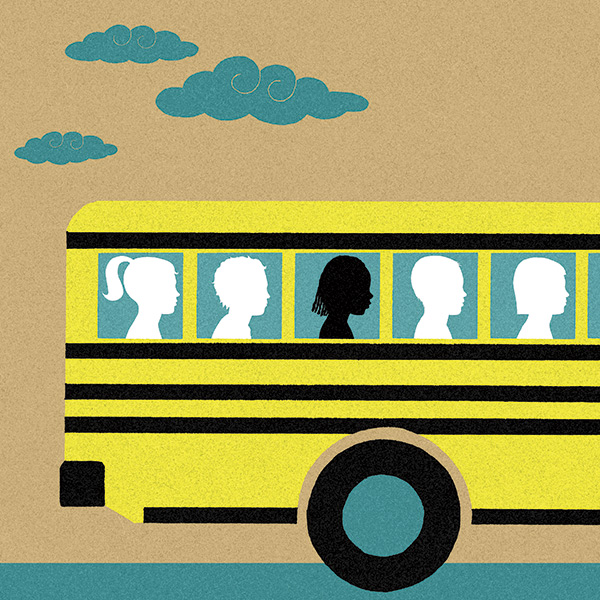
Illustration: James Steinberg
While a doctoral student of education leadership at the University of Nevada, Las Vegas, Sonya Douglass Horsford helped a local nonprofit launch a K-5 public charter school primarily serving black students.
“The board was local and everything was community-based,” she recalls. “But then came charters funded by for-profit organizations and managed by companies from out of state. They drained state resources.”
For Horsford, Associate Professor of Education Leadership, the charter movement’s evolution exemplifies “the irony and paradox” of expecting U.S. schools to serve as “an equalizing force in a country founded on race and class inequality.” Her scholarship explores how American education policy for the past six decades reflects a racial caste system that invokes “color-blindness” and “meritocracy.” Education researchers are complicit, she argues, when they focus on dissimilarity and diversity while ignoring context — poverty, prejudice, unequal opportunity — and racism’s impact on schools.

“I put my hope in the generation coming of age. Like student activists of the 60s, they have a strong sense of justice, the power of education and the capacity to make change.”
— Sonya Douglass Horsford, Associate Professor of Education Leadership
In her 2011 book Learning in a Burning House: Educational Inequality, Ideology, and (Dis)Integration, Horsford interviews retired black school superintendents in whose districts, in Martin Luther King, Jr.’s words, the races achieved “physical proximity, but not spiritual affinity.” They contrast the mass firing of black educators occasioned by desegregation, and the toll exacted on black students by practices such as busing, with the tightly knit all-black school they attended, where caring adults reinforced high expectations.
Though dismayed by the current political climate, Horsford sees opportunities to “reframe discussions of race and racism from individual attitudes and acts of prejudice and discrimination toward an examination of the structural, institutional and administrative policies, processes and practices that maintain and reproduce inequities in schools and school systems.
“I put my hope in the generation coming of age. Like student activists of the 60s, they have a strong sense of justice, the power of education and the capacity to make change.”